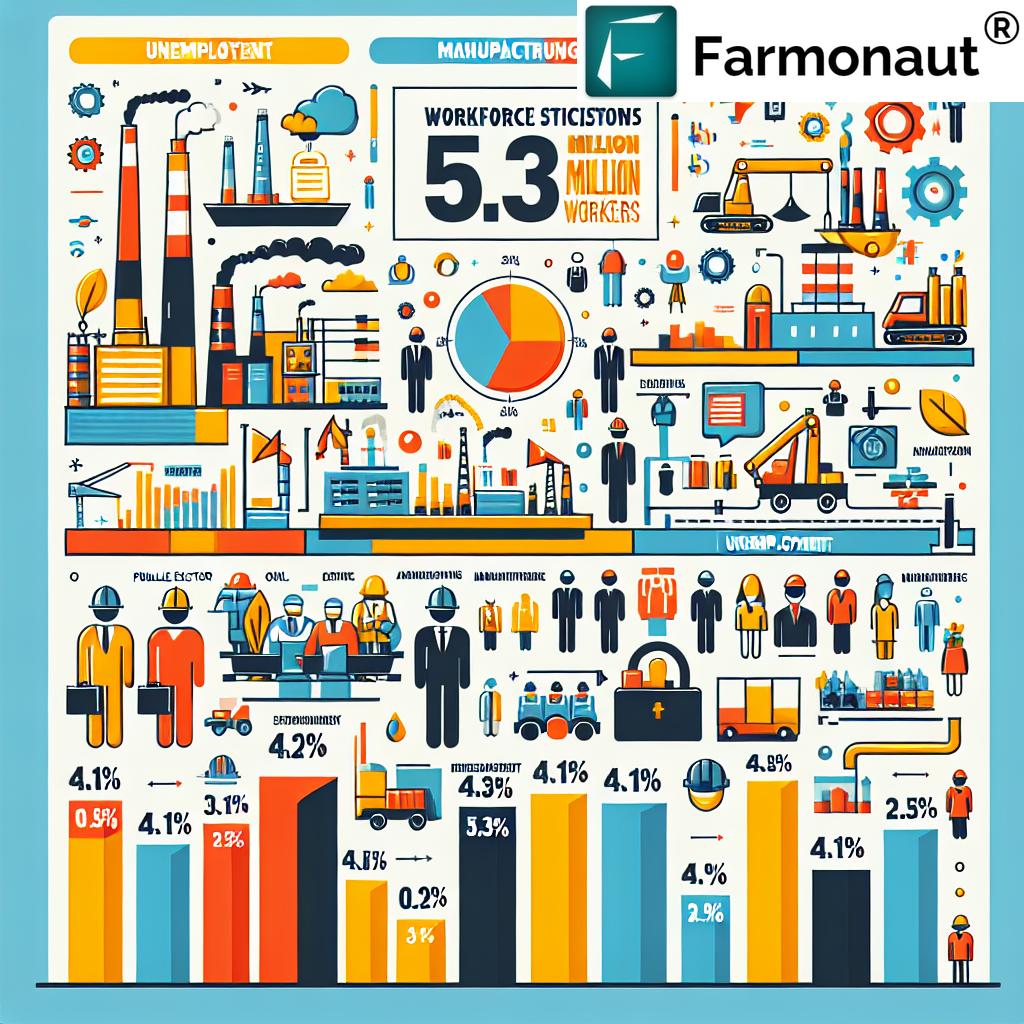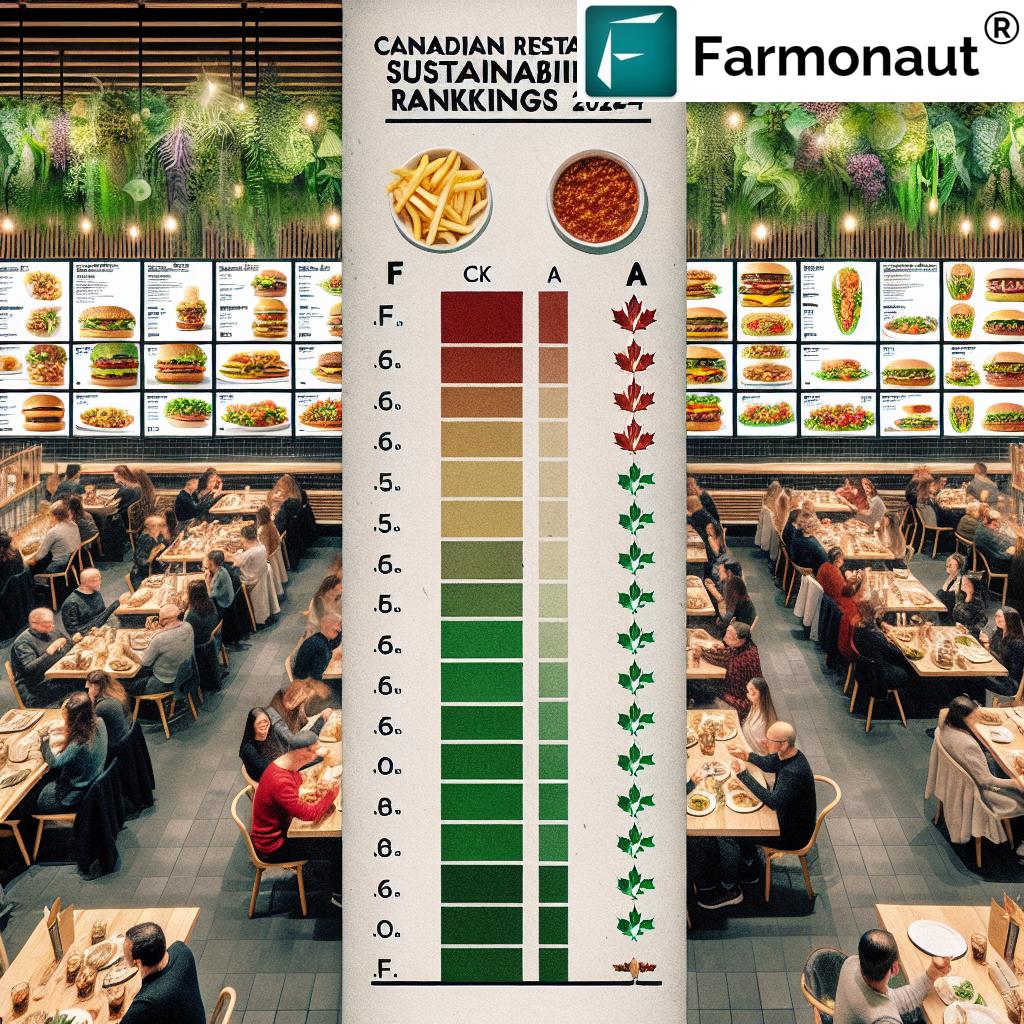Table of Contents
- Introduction
- Russia’s 2024 Wheat Price Floor Policy: An Overview
- Establishment of the Wheat Price Floor 2024
- Promotion and Impact of Direct Wheat Sales
- Global Comparison: Wheat Export Price Floors in 2024
- Impact of Russian Wheat Price Floor on Global Wheat Prices
- Challenges, Circumvention, and Policy Criticisms
- Enabling Sustainable Wheat Production: Farmonaut’s Technological Solutions
- FAQ: Russia’s 2024 Wheat Price Floor & Global Grain Markets
- Conclusion: Market Outlook & Strategic Recommendations
“Russia set a $250/ton minimum export price for wheat in 2024, directly influencing global grain market stability.”
Russia Sets $250/ton Wheat Price Floor: 2024 Impact
Introduction
Wheat remains a vital global commodity, integral to food security and economic stability across continents. In October 2024, Russia, the world’s leading wheat exporter, implemented bold measures to stabilize its export market and address challenges facing farmers and international grain trade. By setting a wheat export price floor of $250 per metric ton and urging exporters towards direct wheat sales to international buyers, the Russian government aimed to counteract steep discounting, market manipulation by intermediaries, and ensure fair compensation for domestic producers.
These strategic actions sent ripples across the global wheat market, influencing competitive dynamics, price stability, and the design of export strategies for countries worldwide. In this blog, we explore the establishment of the wheat price floor 2024, the promotion of direct sales within Russia’s grain sector, and analyze the impact of wheat price floor interventions on international wheat prices, market participants, and farming sustainability. We’ll also provide a detailed comparison of major wheat-exporting regions, discuss challenges and enforcement issues, and highlight how innovative technologies—like those offered by Farmonaut—empower stakeholders to thrive amid evolving policies.
“In 2024, Russia’s wheat price floor policy impacts over 20% of the world’s wheat export supply.”
Russia’s 2024 Wheat Price Floor Policy: An Overview
In October 2024, under growing domestic and global market pressures, Russia’s Ministry of Agriculture took action to stabilize the country’s grain exports. Central to this initiative was the setting of a price floor for wheat export prices—initially at $240/ton in October, rising to $245 in November and then solidifying at $250/ton in December 2024. Simultaneously, the Russian government advocated for a shift from traditional brokerage-led sales to direct arrangements between exporters and international buyers.
- Goal: To stabilize the Russian wheat market, prevent aggressive discounting, eliminate manipulation by intermediaries, and ensure fair returns for Russian farmers.
- Scope: Approximately 80% of the country’s grain exports are represented by the Russian Grain Exporters Union, which now publishes FOB wheat quotations as price indices for the export market.
- Mechanisms: The Ministry of Agriculture both requested and recommended that exporters not sell below the $250/ton minimum price at international tenders and encouraged sellers to negotiate direct wheat sales to buyers, bypassing foreign intermediaries.
- Context: These actions followed the withdrawal of major multinational trading companies from the Russian grain market in July 2023, shifting dynamics in the supply chain and increasing the importance of governmental and union-led oversight.
Establishment of the Wheat Price Floor 2024: Rationale and Process
The Role of the Russian Grain Exporters Union
The Russian Grain Exporters Union, representing a substantial portion of Russia’s grain exports, was pivotal in the establishment of the price floor. Beginning in October 2024, the Union started publishing indicative wheat export prices for 12.5% protein content grain. These indicative FOB (Free-On-Board) wheat quotations, based on shipments from the Black Sea port of Novorossiysk, served as a reference to harmonize and stabilize export transactions in an increasingly volatile environment.
- October 2024: Indicative price at $240 per ton
- November 2024: Increased to $245 per ton
- December 2024: Set at a floor of $250 per metric ton
This approach was not directly mandated—exporters retained discretion to follow the guidelines—but heavy encouragement came from both the Union and government bodies, especially at high-level international tenders.
Motivations Behind the $250/Ton Wheat Price Floor
- Production Costs: With rising production costs, high interest rates, and delayed payments affecting the profitability of wheat growers and exporters, the policy aimed to ensure fair compensation and market sustainability.
- Market Manipulation Prevention: The floor was designed to curb aggressive discounting practices and eliminate opportunities for market manipulation by intermediaries.
- Support for Domestic Farmers: By creating a benchmark for pricing, the policy was intended to protect the livelihoods of Russian farmers—critical for agricultural and rural stability.
Policy Implementation: Directives and Enforcement
The Ministry of Agriculture formally requested exporters to adhere to the minimum $250/ton level for tenders and directed them to avoid undercutting at international sales events. The aim was to eliminate underselling that might otherwise destabilize the market and diminish returns for producers.
While the government’s approach was not announced as a binding law, it was strongly emphasized—creating an environment in which compliance was implicitly expected and deviations could attract scrutiny or reputational risk.
Wheat Export Price Floors 2024: A Global Comparison
Promotion and Implementation of Direct Wheat Sales
Why Promote Direct Export Sales?
A core dimension of Russia’s wheat export restrictions in 2024 was the promotion of direct wheat sales. Traditionally, large multinational intermediaries managed distribution and often resold Russian wheat at reduced or manipulated prices after purchase. Following their exit in July 2023, a window opened for domestic exporters to engage international buyers directly.
- Objective: To bypass intermediaries that could undermine price stability and siphon value from Russian producers.
- Approach: Encouraging Russian companies to strike direct deals with importers—particularly from countries in the Middle East, North Africa, and Asia—ensuring market premium benefits returned within the country.
- Expected Impact: Enhanced transparency, market efficiency, and return on exports (with reduced leakage of value to third-country traders).
By bypassing foreign processors, middlemen, and speculative intermediaries, Russia sought to prevent reselling at reduced prices, manipulation, and market volatility, thereby strengthening the domestic agricultural sector and the broader economy.
The Russian Wheat Market in 2024: Context and Competitive Dynamics
Russia has established itself as the world’s largest wheat exporter, supplying over 20% of total global wheat exports. The Russian wheat market in 2024 was characterized by record-high harvests due to expanded planting areas, improved agronomic practices, and favorable weather conditions. However, these gains came with challenges:
- Rising Production Costs: Input prices (fertilizer, fuel, equipment) remained high, and global inflation elevated costs for Russian producers.
- Volatility in Export Markets: Fluctuating global wheat prices and commodity cycles increased uncertainty for both exporters and farmers.
- Exit of Multinational Traders: The withdrawal of major firms in July 2023 increased the stakes and responsibility of domestically-led trade organizations and intensified the search for transparency and control.
For traders and agribusinesses seeking transparency in wheat supply chains, Farmonaut’s blockchain-based traceability solutions ensure every stage of product movement is documented and verifiable. This increases confidence in the quality, origin, and sustainability of wheat exports—essential in a climate of policy shifts and increased compliance demands.
Summary of Russian Policy Actions in October 2024
- Price Floor Implementation: Set and published indicative wheat export prices per ton for each month, aiming at $250 by year-end.
- Exporters’ Expectations: Ministry of Agriculture requested exporters to avoid undercutting and sell at or above the floor.
- Promotion of Direct Sales: Encouraged exporters to make deals directly with international buyers, avoiding intermediaries and enhancing the share of export value retained domestically.
- Market Monitoring: The Grain Exporters Union began publicizing weekly export price indices, supporting transparency and reducing manipulative practices in price reporting.
Impact of Wheat Price Floor 2024 on Global Wheat Prices and Market Stability
Immediate Effects on the Global Grain Market
Russia’s intervention in wheat export prices produced notable effects across the international grain market:
- Price Stability: The wheat export price floor was designed to reduce market volatility and create consistent benchmarks for buyers and sellers worldwide.
- Market Confusion: Despite the indicative nature, the lack of formal governmental confirmation initially led to uncertainty among international traders. Buyers questioned the enforceability of the measures and whether exceptions might be granted.
- Competitiveness: The new floor made Russian wheat less competitive on price, especially where other origins (such as the European Union) could offer lower or more flexible rates. This led to a shift in purchasing in regions like MENA (Middle East and North Africa).
- Export Volumes: Notably, despite the floor, Russia’s wheat exports remained robust, with potential totals for 2024/25 at 55–57 million metric tons—underscoring enduring global demand.
- Promotion of Grain Market Stability: By curbing aggressive discounting, the price floor contributed to grain market stability and helped synchronize global wheat price trends—albeit at a higher base price.
Market Response in Key Regions
- Middle East & North Africa (MENA): With Russian wheat less aggressively priced, EU and other regional suppliers increased their market share.
- Asia: Buyers weighed quality and price considerations, with some volumes shifting away from Russia depending on price differentials against the new floor.
- Africa: Lower-income buyers faced pressure as prices stabilized at higher levels, challenging food import bills.
Long-Term Strategic Implications
Over the longer run, the impact of wheat price floor policies like Russia’s is likely to ripple through trade relationships, incentivize other exporters to review their pricing strategies, and encourage investments in efficiency and value-added production. Market players will likely continue to monitor the effectiveness of market manipulation prevention and evaluate whether such interventions provide sustained benefit or create new challenges.
Strengthening Carbon Intelligence in Export Operations
As sustainability becomes a global priority, Farmonaut’s carbon footprinting solutions empower exporters, grain companies, and governments to monitor, analyze, and report carbon emissions associated with crop logistics. This visibility is increasingly required in grain export contracts and national food import requirements and adds a vital layer of trust to wheat supply chains.
Challenges, Circumvention & Criticism of Russian Wheat Export Restrictions
Practical Enforcement and Workarounds
Although the wheat export price floor set in Russia was clear in intention, reports from industry participants revealed several challenges:
- Market Disruptions: Traders described a “broken” market immediately after the floor was set. Deals at the newly mandated price levels became scarce as some buyers withdrew or delayed tenders.
- Circumvention via CIF Basis: Some exporters sidestepped the FOB price restrictions by negotiating on a CIF (Cost, Insurance, and Freight) basis. This complicated true price discovery and drew attention to possible gray zones in enforcement.
- Exporter Risk: The move away from intermediaries placed new risks on exporters, who now had to directly manage freight, finance, insurance, and debtor risk previously absorbed by traders or brokers.
- Lack of Official Confirmation: Prolonged delays in outright government decree led to uncertainty and speculation about policy longevity and exceptions.
- Effectiveness in Achieving Goals: Critics questioned whether the policies indeed led to higher real incomes for farmers or simply reduced market fluidity and choice.
To adapt to new export strategies, Farmonaut’s fleet management tools help agribusinesses efficiently organize, monitor, and optimize logistics when conducting direct wheat exports. This lowers operational costs and risk in international grain transportation—a new competitive advantage under policies favoring direct sales.
Feedback from Domestic and International Stakeholders
- Farmers: Many welcomed policy efforts aimed at increasing returns, but worried about export slowdowns or longer payment cycles due to reduced market liquidity.
- Exporters: Raised concerns about operational risks (credit, logistics, default), especially with direct-to-buyer models.
- Global Buyers: Sought clearer communication and official confirmation to plan procurement strategies efficiently.
Summary of Policy Challenges
- Enforcing a price floor on a complex, global market is difficult—workarounds persisted.
- Rigid price levels can reduce flexibility and responsiveness to international shifts.
- Direct sales, while transparent, expose smaller exporters to additional volatility and operational complexities.
- Market manipulation prevention measures require ongoing monitoring and timely policy adjustments.
Exporters and farmers navigating market policy changes benefit from Farmonaut’s crop loan and insurance verification services. Using satellite verification, these tools streamline financing and reduce risks for both lenders and borrowers amidst changing price environments.
Enabling Sustainable Wheat Production & Export: Farmonaut’s Technological Edge
Policy changes in markets as large as Russia’s mean wheat exporters, farmers, traders, and governments require accurate, real-time insights for both short- and long-term planning. Farmonaut, as a technology leader, plays a vital role in supporting these stakeholders. Here’s how our platform can help navigate the challenges and opportunities of 2024’s evolving wheat market:
Farmonaut’s Capabilities for the Global Wheat Market
- Satellite-Based Crop Health Monitoring: We deliver multispectral imagery (NDVI, soil moisture, vegetation health) to inform sustainable wheat production, yield estimation, and optimal resource allocation.
- AI-Based Advisory: Our Jeevn AI Advisory System provides real-time agronomic intelligence—advising farmers on weather, pest/disease risks, and management strategies. This maximizes yield even under volatile or uncertain market conditions.
- Blockchain-Based Traceability: Our traceability platform tracks grain origin, movement, and certification—increasing trust for exporters and meeting standards for international buyers under stricter policy regimes.
- Resource and Fleet Management: We help large-scale exporters and agribusinesses coordinate logistics and reduce costs for international direct sales.
- Carbon Footprinting: As expectations for sustainable and low-carbon supply chains increase, our platform quantifies and benchmarks emissions from wheat export activities.
For governments and organizations administering extensive agricultural land, Farmonaut’s large-scale farm management app offers advanced monitoring, compliance checks, and scalable dashboard solutions, simplifying oversight and decision-making against a complex policy backdrop.
Integrate Farmonaut data into your own systems with our satellite weather API and review our API developer docs for seamless development. Streamline commodity monitoring, compliance, and advanced crop modeling within your digital workflows.
FAQ: Russia’s 2024 Wheat Price Floor & Global Grain Markets
What is a ‘wheat export price floor’ and why did Russia introduce it in 2024?
A wheat export price floor is the minimum sales price at which wheat can be exported. Russia introduced this mechanism (set at $250 per metric ton) to prevent aggressive discounting, eliminate price manipulation by intermediaries, stabilize domestic market incomes, and ensure Russian farmers receive fair compensation in global trade.
Who determines the indicative wheat export prices in Russia?
The Russian Grain Exporters Union, which represents approximately 80% of the country’s grain exports, determines and publishes the indicative FOB wheat quotations (for 12.5% protein content shipments from Novorossiysk port).
How did the policy affect the competitiveness of Russian wheat internationally?
The price floor made Russian wheat less price-competitive—particularly against European Union suppliers—causing some traditional buyers in the Middle East and North Africa to seek alternative origins.
What are direct wheat sales, and how do they differ from previous export models?
Direct wheat sales involve Russian exporters negotiating directly with foreign buyers, eliminating intermediaries. Previously, large multinational trading firms dominated purchase and resale, leading to potential market manipulation and reduced premiums returned to Russian producers.
Did other major wheat exporting countries implement similar price floors in 2024?
No. Other major exporters like Ukraine, the USA, Canada, and Australia did not implement formal wheat export price floors in 2024; their export pricing is largely market-driven.
How can technology support exporters and farmers under new price floor regimes?
Technologies like Farmonaut’s satellite-based monitoring, AI advisory, traceability, and carbon tracking provide actionable insights for crop planning, compliance, risk management, and sustainability reporting—helping stakeholders optimize productivity and transparency in changing market environments.
Conclusion: 2024 Market Outlook & Strategic Recommendations
Russia’s decision to set a $250/ton wheat price floor, promote direct export sales, and intensify market oversight represented a landmark intervention in the global grain sector. These measures sought to stabilize prices, prevent manipulation, and protect the livelihoods of Russian farmers—while also creating new competitive dynamics and operational challenges for exporters, buyers, and intermediaries.
For market participants, adapting to policy-driven grain markets means cultivating data-driven agility, emphasizing transparency, and leveraging advanced technology platforms like those provided by Farmonaut. Our solutions—spanning crop health monitoring, blockchain-powered traceability, resource and carbon management, and scalable advisory systems—allow stakeholders across the wheat value chain to stay compliant, competitive, and sustainable in a fast-evolving global landscape.
While the effectiveness of the wheat price floor 2024 and direct sales promotion will be scrutinized in coming years, their intent to foster grain market stability and equitable value distribution is clear. As global wheat prices, logistics, and compliance demands continue to change, the insights and accountability enabled by modern agritech become ever more essential.
Explore more features, manage your farm intuitively, and build resilient, sustainable wheat export strategies:
Open Farmonaut App |
Try Farmonaut API |
API Docs


















